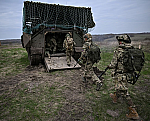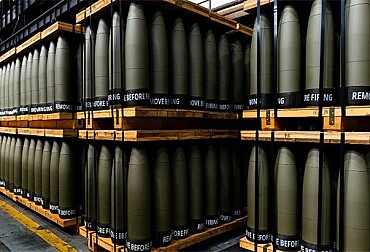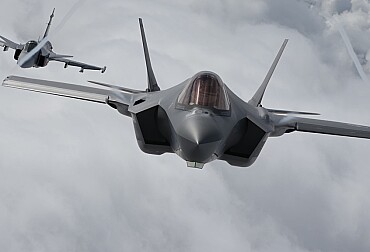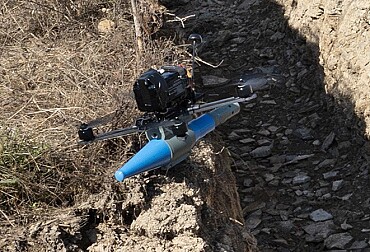The rebirth of the Pakistani Taliban
The radical Sunni Islamist Taliban (Tahrik-e Taliban Afghanistan – TTA) movement has attracted attention since the 1990s, when it took over all power in Afghanistan. Public floggings and executions or the destruction of pre-Islamic cultural sites have brought it to the attention of a shocked world. After the intervention of the US armed forces and their allies in 2001, the movement was removed from power, but it has regained it twenty years later. The allied Pakistani branch of the Taliban (Tahrik-e Taliban Pakistan – TTP) is not as well known as the Afghan branch, but that does not mean it is less important or less dangerous.

Initially, it was built on more of an ethnic basis, advocating the carving out of the Pashtun territories from the Pakistani state and their integration with Afghanistan. The removal of the Pakistani constitutional establishment in the Pashtun territories is to be followed by the creation of an Islamic caliphate. To give you an idea, this is the north-western part of Pakistan, mainly the Khyber-Pakhtunkhwa province, and also the tribal areas along the Afghan border. And, for example, Afghan leaders, whether they belong to the Taliban or previous pro-Western leaders, have repeatedly declared that the Durand Line - that is, the current international border - is meaningless to them and that they will not respect it because they want a comprehensive so-called 'Pashtunistan'.
The TTP movement has been active in Pakistan since the end of the first decade of this century, for example, the occupation of the Red Mosque (Lal Masjid) in Islamabad during 2007 by TTP-affiliated extremists is world famous. A massive campaign by the Pakistani army and other armed forces curtailed its activities and pushed TTP members into the tribal areas or across the country's borders. In the following years, the country's internal security situation improved markedly and the TTP ceased to be a significant threat. Some parts of the north-west of the country have subsequently experienced notable progress, manifested in newly built schools, sports facilities and the development of domestic tourism.
Ten thousand fighters on Pakistani territory
A decade later, however, history is repeating itself as the extremist movement in Pakistan has become more active in the wake of changes in Afghanistan's power structure. Significant numbers of TTP fighters (estimates go up to ten thousand) are once again threatening soldiers and civilians on Pakistani territory and reoccupying previously abandoned positions. Officials in Pakistan's political arena and security forces have also repeatedly complained that TTP members have a safe haven in Afghanistan, contrary to the TTA's publicly stated policy of not providing Afghan soil as a base for attacks on other countries. TTA officials understandably refuse to acknowledge this accusation (they even publicly advise their members not to participate in fighting against Pakistani statehood), but this still undermines relations between the two countries. The Pakistani armed forces are responding to the situation by increasing pressure on TTP militant groups, targeting the movement's leaders and attacking their bases on Afghan territory, for example in Khost and Kunar provinces.
The impact of TTP activity on the people of rural Pakistan is significant, numbering many hundreds of attacks in this calendar year alone. Pakistani citizens are thus justifiably concerned for their security, even though the TTP claims only Pakistani security forces as its legitimate target, not civilians or foreigners within Pakistan. It is undeniable that the consequences of attacks on Pakistanis are religious, social and economic, in addition to direct violence. The TTP's attacks on girls' schools or Shia mosques are often cited examples, but the TTP is also behind attacks on medical teams providing polio vaccinations to rural children, for example. And there is also no doubt about the destructive impact of the deteriorating security situation on the local economy. Attacks against leaders of enemy factions among militants have also been attributed to the Pakistani Taliban, but thanks to centralised leadership they are now no longer allowed to occur. Moreover, the local population, despite professing traditional religious values, is partly opposed to the rigid version of Islam promoted by the Taliban. All of these factors are causing rural people to flee some localities, turning them into internally displaced persons and thus placing a burden on their relatives, the state administration and the security sector.
Risk of spreading separatism
The current state of the TTP and the level of attacks being carried out suggest a more organized and centralized structure, allowing for better use of available forces and resources. It is unclear what is behind the current rise of the TTP, whether it is new attractive ideas, additional sponsors or better methods of recruiting supporters. The movement has also managed to win many local terrorist groups to its side. Among them, the separatists in Balochistan, a Pakistani province on the Iranian border, in the south-west of the country, are an interesting phenomenon. And since the goal of the rebel Baloch is also their secession from Pakistan, the risk of the spread of separatism and fragmentation of the country is constantly increasing. All groups are now operating together under a unified leadership. Again, the natural consequence is better coordination and execution of actions and effectiveness of attacks in the worst sense of the word.
Another important point related to the current TTP activities is the well-run media campaign. This is both on social media, which is a very important phenomenon nowadays, but also includes, for example, the publication of printed media. In particular, published video clips on various social platforms form a strong persuasive potential in the often illiterate Pakistani society to generate attention and subsequently recruit new supporters. And one of the other themes of the TTP, for example, is the effort to curb corruption in Pakistan's state and administrative apparatus, which is intended to improve the status of both Pashtuns and Baloch in their respective provinces.
On the other hand, the movement has not yet proclaimed any political or economic goals, only armed resistance to the Pakistani state establishment and the application of Islamic Sharia law in the management of society. However, there are also views that the TTP is not as unified and internally organised as the Western understanding of the term imagines. The future trends in the development of the movement are also unclear, either it will continue on a violent path with the risk of clashes with state power, or it will somehow transform itself into a political entity to achieve its goals, as the Irish Republican Army has done. It is also true that, according to the information available, there are divisions between the TTA and the TTP, which are thought to be due to the different objectives and strategies of the two movements. It is therefore questionable whether the TTA has any, or how much, influence over the TTP leaders, and therefore a realistic possibility of somehow changing their approach, bringing them to the negotiating table, for example, and keeping them at the negotiating table.
At the same time, the question arises to what extent the current Pakistani political and military representation is capable of managing the security risks posed by the TTP. Let us not forget that the government must also deal with the consequences of the disastrous floods and subsequent crop failure last year, the political instability in the country, the unfavourable economic situation or the long-standing escalated confrontation with neighbouring India. Moreover, the TTP's actions are taking place in the vicinity of the projects being promoted under the China-Pakistan Economic Corridor (CPEC), a plan to build transport and service infrastructure to move Chinese goods through Pakistani territory to the port of Gwadar on the Arabian Sea coast. Given the multi-billion dollar size of Chinese investment, pressure on the Pakistani government to ensure the security of the projects is expected to be high from all sides.
Forced return of Afghan refugees
Incidentally, the Pakistani government has now launched an action to return undocumented refugees to their countries. In the Pakistani context, this is mainly the Afghan community who are to be forcibly returned on the grounds that Afghanistan is a safe country after the war and that some refugees pose a security risk. According to official reports, the number of unregistered persons in Pakistan is said to be 1.7 million; the number of registered refugees is slightly higher, totalling about 4.5 million. Leaving aside the fact that this is an expedient justification from the Pakistani side, the main point seems to be to create a problem for the Taliban government in Afghanistan as to how it will take care of hundreds of thousands of people in the coming winter. Many such repatriates have no assets or livelihood in Afghanistan, do not want to return to Taliban rule, or were born in Pakistan and have no ties to their country of origin. This is not to mention the normal situation of the country's energy or food supply, which was not even sufficient for the existing Afghan population.
In the current situation, the TTP is at an advantage it did not have in the previous decade because it has a friendly base in neighbouring Afghanistan. And the Pakistani leadership is aware of this, which again places additional demands on diplomacy and the security sector. On the other hand, it is reasonable to assume that the TTP now lacks the strength and resources to bring about significant socio-political change in Pakistan. However, instability in the region will undoubtedly continue.








